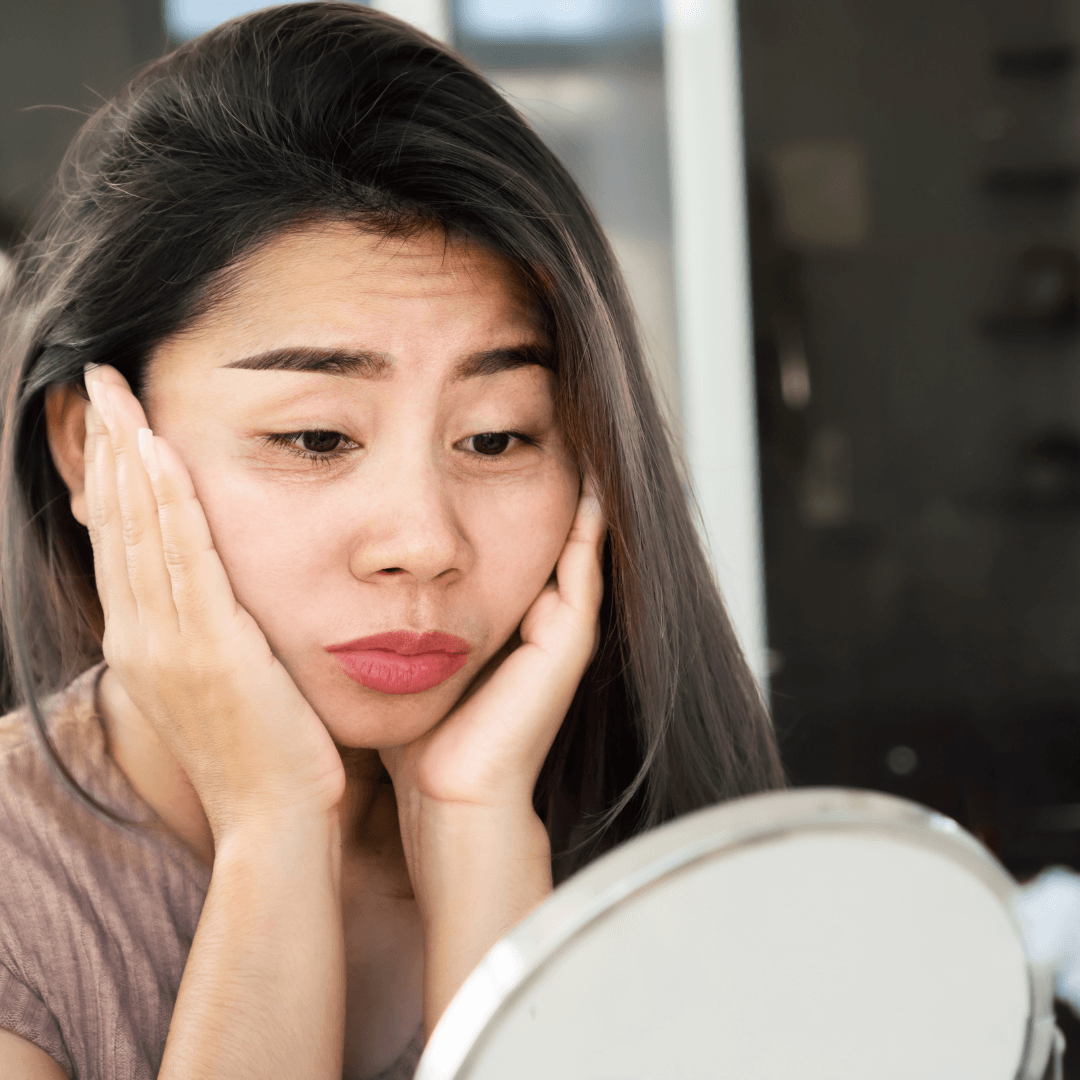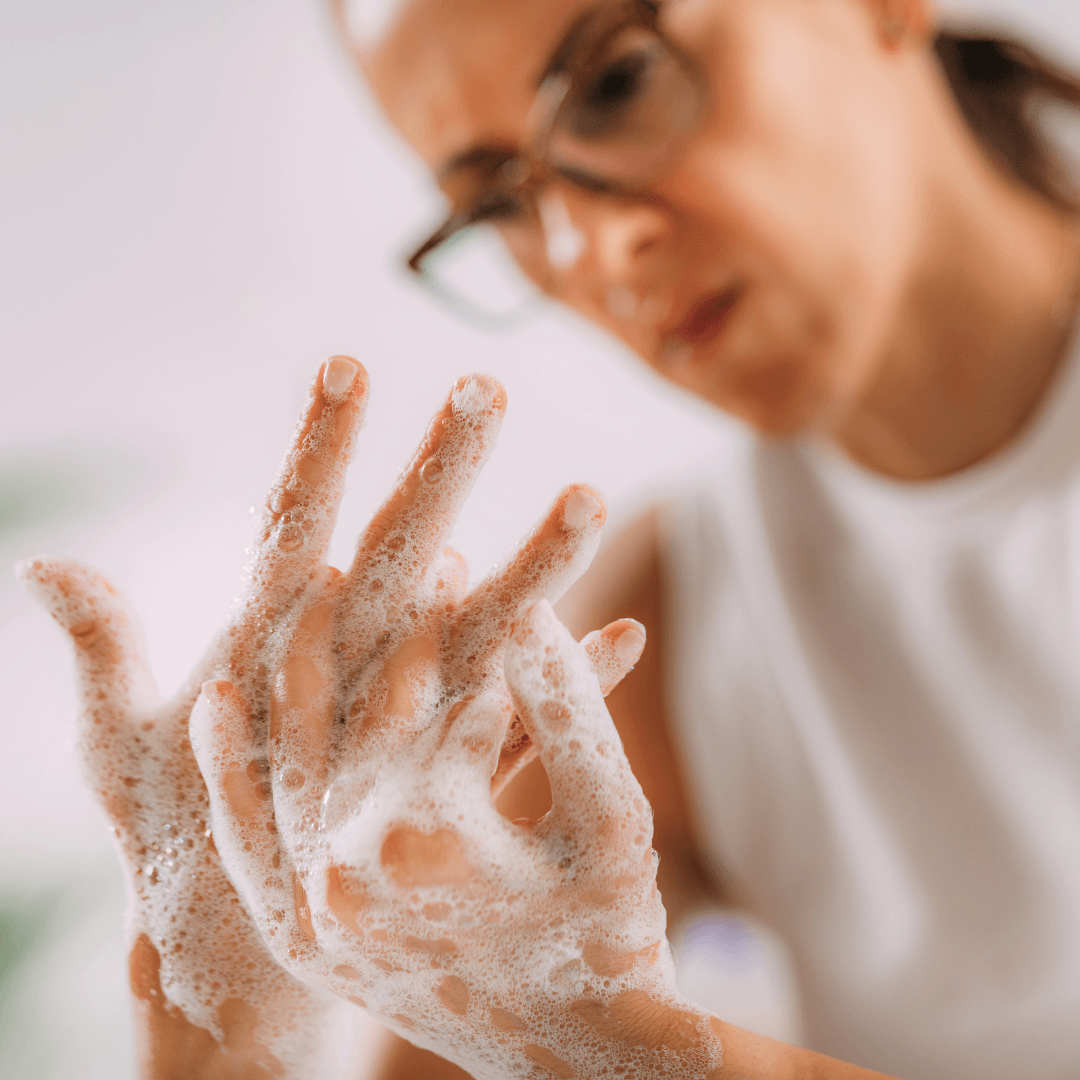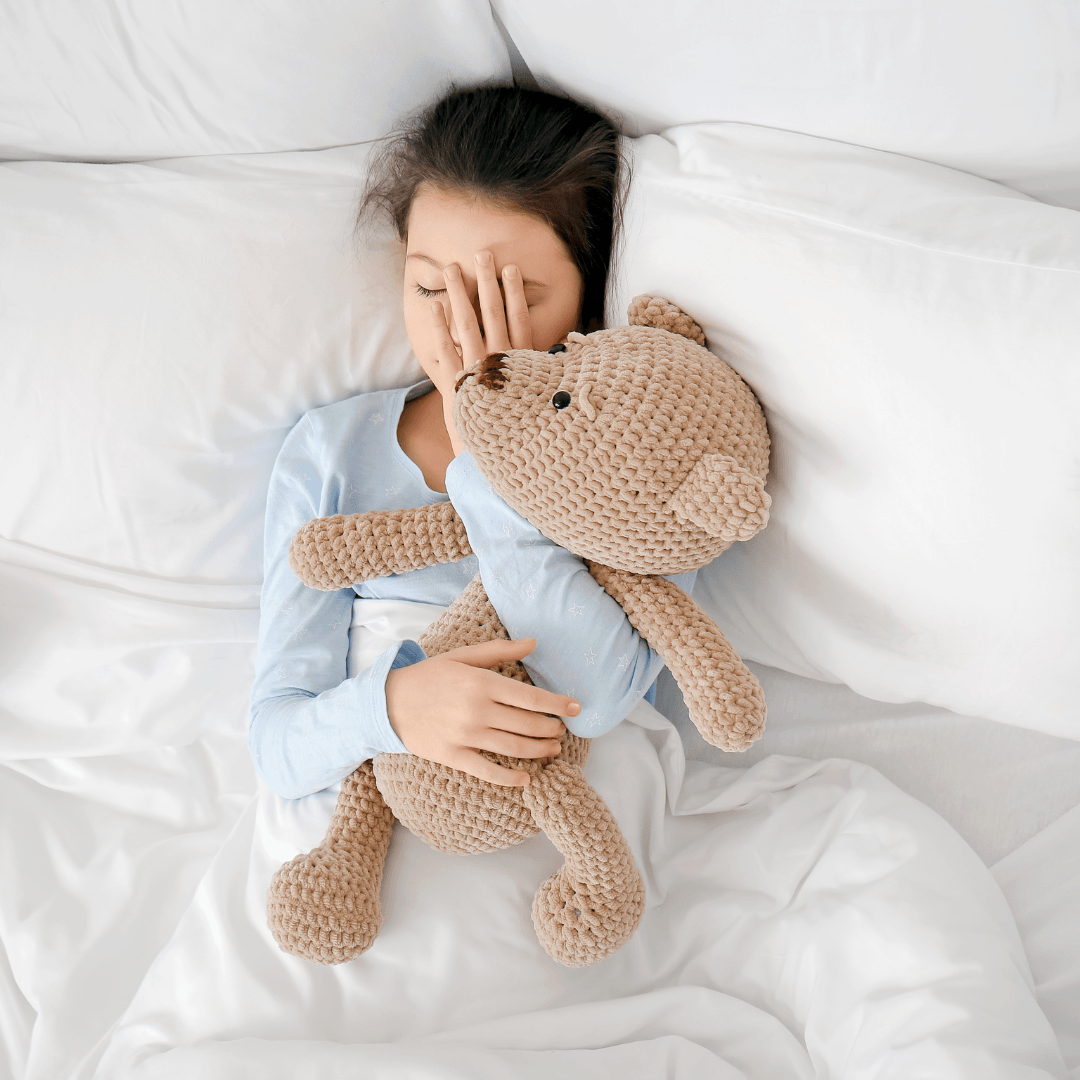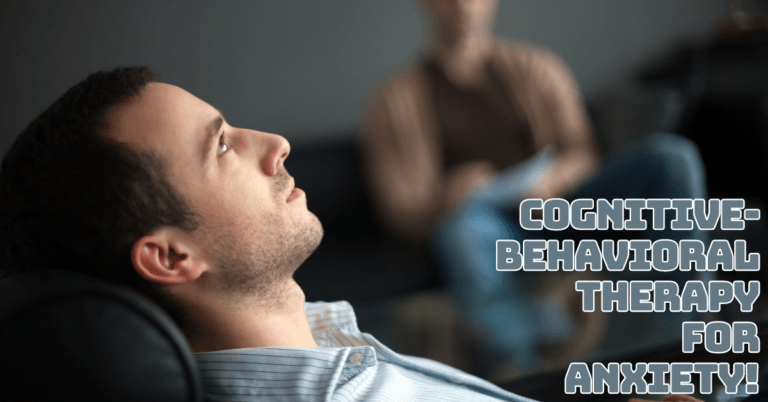OCD Symptoms In Women
Obsessive-Compulsive Disorder (OCD) affects millions worldwide, with women experiencing unique symptoms and challenges.
OCD Symptoms in Women frequently include obsessive thoughts about contamination, harm, and perfectionism, along with compulsive behaviours that often intensify during major hormonal changes, such as pregnancy and menopause.
Understanding these gender-specific nuances is crucial for effective diagnosis and treatment. This article explores the distinctive characteristics of OCD in women, shedding light on their struggles and highlighting the importance of tailored therapeutic approaches.
OCD Symptoms In Women: A Guide To Identification And Support
Obsessive-Compulsive Disorder (OCD) manifests in various ways and can be influenced by factors such as gender.
In women, OCD symptoms can often align with life stages like menstruation, pregnancy, and menopause due to hormonal changes. Here are some common OCD symptoms in women:
1. Intrusive Thoughts
Women with OCD often experience persistent, intrusive thoughts that are distressing and hard to control.
These thoughts can include fears of harm, contamination, or taboo subjects. The anxiety caused by these thoughts may lead to repetitive behaviours or rituals, such as checking, cleaning, or mental reassurance, to alleviate distress.
Treatment: Treatment includes Cognitive Behavioral Therapy (CBT), particularly Exposure and Response Prevention (ERP), which helps individuals confront fears without performing compulsive behaviours.
Drugs such as selective serotonin reuptake inhibitors (SSRIs) may also be recommended to treat symptoms. Support groups and stress-reduction techniques may complement therapy.
2. Compulsive Behaviours
Compulsive behaviours in women with OCD involve repetitive actions performed to reduce the distress caused by intrusive thoughts.
These may include excessive cleaning, constant checking, counting rituals, or arranging items meticulously.
Such behaviours are intended to prevent perceived dangers or alleviate anxiety, but often, they provide only temporary relief.
Treatment: Effective treatment includes Cognitive Behavioral Therapy (CBT) with Exposure and Response Prevention (ERP), which helps individuals confront triggers without resorting to compulsions.
Combining therapy with support groups and stress management techniques can further enhance recovery.

3. Perfectionism
Perfectionism in women with OCD manifests as an intense need for order, symmetry, or flawless performance.
This obsession with perfection can affect personal appearance, work tasks, and home environments, leading to excessive checking, redoing tasks, or meticulously arranging items. Such demands create significant stress and can consume a lot of time.
Treatment: Treatment focuses on Cognitive Behavioral Therapy (CBT) with Exposure and Response Prevention (ERP) to challenge and reduce perfectionistic standards.
Medications like SSRIs can help manage symptoms. Incorporating mindfulness techniques and stress reduction strategies may also be beneficial. Therapy aims to improve tolerance for imperfection and reduce associated rituals.
4. Fear Of Contamination
Fear of contamination in women with OCD involves intense anxiety about germs or dirt, resulting in excessive hand-washing, cleaning, or avoidance of specific places or people.
This fear can lead to compulsive behaviours to prevent perceived contamination and avoid situations perceived as unclean or risky.
Treatment: Cognitive Behavioral Therapy (CBT) combined with Exposure and Response Prevention (ERP) is commonly used in treatment to progressively expose patients to feared pollutants without requiring them to follow obsessive rituals.
SSRIs and other medications can help manage symptoms. Additionally, incorporating hygiene education and stress management techniques can support overall treatment effectiveness.
5. Hoarding
In OCD, hoarding behaviour involves difficulty discarding items due to fear of needing them later or anxiety about losing something valuable.
This can lead to cluttered living spaces and significant distress. The inability to let go of possessions often results in excessive accumulation of items and can interfere with daily functioning.
Treatment: Treatment for hoarding in OCD often includes Cognitive Behavioral Therapy (CBT) with Exposure and Response Prevention (ERP), focusing on helping individuals make decisions about discarding items.
Additionally, Cognitive Restructuring helps challenge beliefs about the necessity of possessions. Medications like SSRIs may be prescribed to address underlying anxiety and compulsions.
6. Hyper-Responsibility
Hyper-responsibility in mothers with OCD involves an overwhelming sense of duty to ensure their children's safety.
This can lead to constant checking, excessive monitoring, and obsessive worry about potential harm.
The anxiety can result in overprotective behaviours and an inability to relax, impacting both the mother and her family.
Treatment: Treatment typically includes Cognitive Behavioral Therapy (CBT) with Exposure and Response Prevention (ERP), which helps manage excessive responsibility by gradually reducing safety behaviours.
Cognitive Restructuring addresses distorted beliefs about safety and responsibility. Medications like SSRIs may be used to alleviate anxiety. Techniques for stress management and support groups might also be helpful.

7. Body Image Obsessions
Body image obsessions in women with OCD involve intense preoccupation with their physical appearance.
This can lead to excessive grooming, frequent mirror checking, or even avoiding mirrors entirely. These obsessions often cause significant distress and impact self-esteem and daily functioning.
Treatment: Treatment generally includes Cognitive Behavioral Therapy (CBT) with Exposure and Response Prevention (ERP) to address body image concerns and reduce compulsive behaviours.
Cognitive Restructuring helps challenge negative beliefs about appearance. Medications like SSRIs may also be prescribed to manage symptoms.
Incorporating body-positive practices and stress reduction techniques can further support recovery.
8. Cosmetic Perfectionism
Cosmetic perfectionism involves an obsessive focus on achieving flawless makeup or appearance. Women may spend excessive time perfecting their looks and become preoccupied with minor flaws often unnoticed by others. This obsession can lead to significant stress, repetitive checking, and impaired daily functioning.
Treatment: Cognitive Behavioral Therapy (CBT) combined with exposure and response prevention (ERP) is a common treatment method used to help patients question arbitrary beauty standards and spend less time on cosmetic rituals.
Cognitive Restructuring addresses distorted perceptions about appearance. Medications like SSRIs may be used to manage anxiety. Complementary strategies include building self-esteem and practicing self-compassion.
9. Unwanted Sexual Thoughts
Unwanted sexual thoughts in women with OCD involve intrusive, distressing thoughts about sexual content that conflict with their values or self-identity.
These thoughts can cause significant shame, anxiety, and guilt, leading to compulsive behaviours or mental rituals aimed at neutralizing or counteracting the distress.
Treatment: Treatment typically involves Cognitive Behavioral Therapy (CBT) with Exposure and Response Prevention (ERP) to confront and reduce the distress associated with intrusive sexual thoughts.
Cognitive Restructuring helps challenge distorted beliefs about these thoughts. Medications like SSRIs can also be effective in managing symptoms. Support groups and stress reduction techniques may complement therapy.
10. Food-Related Rituals
Food-related rituals in women with OCD involve specific, repetitive behaviours related to food, such as cutting food in a precise manner, eating in a set order, or avoiding certain foods due to contamination fears.
These rituals are performed to reduce anxiety or prevent perceived harm but can interfere with daily life and eating habits.
Treatment: Treatment typically includes Cognitive Behavioral Therapy (CBT) with Exposure and Response Prevention (ERP) to address food-related rituals by gradually exposing individuals to feared food situations without engaging in rituals.
Cognitive Restructuring helps challenge beliefs about contamination and harm. Medications like SSRIs may be prescribed to manage symptoms.
11. Avoidance Of Certain Foods
Avoidance of certain foods in women with OCD often stems from fears of contamination, choking, or illness.
This can lead to avoiding specific foods or food groups, impacting nutritional intake and overall well-being. The avoidance is typically driven by excessive anxiety and compulsive beliefs about food safety.
Treatment: Treatment generally involves Cognitive Behavioral Therapy (CBT) with Exposure and Response Prevention (ERP) to address and gradually reduce food avoidance behaviours.
Cognitive Restructuring helps challenge irrational fears about food safety. Medications like SSRIs may be used to alleviate anxiety. Nutrition counselling and stress management strategies can also support recovery.
12. Moral Perfectionism
Moral perfectionism in women with OCD involves an intense drive to be morally impeccable, leading to compulsive behaviours aimed at correcting perceived wrongs.
This might include excessive apologizing, rectifying minor ethical issues, or engaging in rituals to prevent moral failure, which can cause significant stress and interfere with daily life.
Treatment: Treatment often includes Cognitive Behavioral Therapy (CBT) with Exposure and Response Prevention (ERP) to help address and reduce compulsive moral behaviours.
Cognitive Restructuring assists in challenging distorted beliefs about morality and personal responsibility. Medications like SSRIs can help manage anxiety.

13. Decision-Making Paralysis
Decision-making paralysis in women with OCD is characterized by an intense fear of making wrong choices and a need for certainty.
This leads to procrastination or avoidance of decisions, as the anxiety about potential mistakes can be overwhelming. The result is significant delays and difficulties in managing daily responsibilities.
Treatment: Cognitive Behavioral Therapy (CBT) combined with exposure and response prevention (ERP) is commonly used in treatment to assist patients in making decisions without excessively seeking reassurance or avoiding situations.
Cognitive restructuring addresses fears of making mistakes. To lessen anxiety, doctors may prescribe drugs like SSRIs. Practical decision-making strategies and stress management techniques can also aid in recovery.
14. Nighttime Rituals
Nighttime rituals in women with OCD involve elaborate, time-consuming routines performed before bed, such as checking locks, arranging items, or repeating certain actions.
These rituals are intended to alleviate anxiety or prevent perceived dangers, but they often disrupt sleep and lead to significant distress and fatigue.
Treatment: Treatment usually includes Cognitive Behavioral Therapy (CBT) with Exposure and Response Prevention (ERP) to address and reduce nighttime rituals.
Cognitive Restructuring helps challenge the beliefs driving these rituals. Medications like SSRIs may help manage symptoms. Improving sleep hygiene and relaxation techniques can also support better rest and recovery.

15. Counting And Repeating
Women with OCD often experience intense anxiety about making mistakes, leading to excessive preparation and overworking.
This perfectionism can manifest as compulsive checking, organizing, or redoing tasks to ensure they are flawless. The relentless pursuit of perfection can cause significant stress, mental exhaustion, and burnout.
Treatment: Treatment typically involves Cognitive Behavioral Therapy (CBT), specifically Exposure and Response Prevention (ERP), which helps individuals face their fears without engaging in compulsive behaviours.
Medications like SSRIs may also be prescribed to manage anxiety. Developing self-compassion and setting realistic expectations are crucial in reducing overworking tendencies.
How Does Premenstrual Syndrome Affect OCD Symptoms In Women
Premenstrual Syndrome (PMS) can significantly impact OCD symptoms in women due to hormonal fluctuations that occur throughout the menstrual cycle. Here’s how PMS might affect OCD symptoms:
1. Increased Anxiety
Hormonal fluctuations during PMS especially changes in estrogen and progesterone, can heighten general anxiety levels.
This increase in anxiety can exacerbate OCD symptoms, leading to more frequent or intense intrusive thoughts and compulsive behaviours.
The added stress and discomfort from hormonal shifts may make it more challenging for women to manage their OCD, intensifying the overall impact of their symptoms and potentially leading to greater difficulty in coping.

2. Mood Swings
PMS can cause mood swings and irritability, intensifying the distress linked to obsessive thoughts in women with OCD.
These emotional fluctuations heighten anxiety and discomfort, increasing the urge to perform compulsive rituals as a coping mechanism.
Hormonal changes during PMS can influence brain chemistry and neurotransmitter levels, potentially affecting the experience and management of OCD symptoms in women by intensifying obsessive thoughts and compulsive behaviours.
3. Stress Sensitivity
Hormonal shifts during PMS can increase stress sensitivity in women, potentially triggering or worsening OCD symptoms.
This heightened stress makes it more challenging to manage OCD-related behaviours effectively, as anxiety and discomfort amplify obsessive thoughts and compulsive actions.
The increased stress sensitivity can disrupt daily functioning and coping mechanisms, exacerbating the overall impact of OCD during this time.
4. Cognitive Function
PMS can impact concentration and cognitive function, impairing the ability to challenge or manage obsessive thoughts and compulsive behaviours in women with OCD.
This cognitive disruption can make it harder to employ coping strategies and maintain focus during therapy or daily activities.
The resulting difficulties in managing OCD symptoms can lead to increased anxiety and distress, exacerbating the overall condition during PMS. Understanding this effect is crucial for providing effective support and treatment.

5. Sleep Disruptions
PMS-related sleep disturbances can lead to heightened anxiety and exacerbate OCD symptoms. Poor sleep impacts mood and cognitive function, making it harder to manage obsessive thoughts and compulsive behaviours effectively.
The resulting fatigue and irritability further contribute to the distress associated with OCD, creating a cycle that worsens overall symptoms.
Addressing sleep issues is essential for improving both anxiety levels and OCD management during PMS.
6. Increased Compulsive Behaviours
Heightened anxiety and discomfort during PMS can lead to an increase in compulsive behaviours in women with OCD.
As fear intensifies, women may engage more frequently in rituals or compulsions to alleviate their distress.
This increase in compulsive behaviours temporarily reduces anxiety but reinforces the OCD cycle, making symptoms more challenging to manage.
Understanding this pattern is crucial for developing effective treatment strategies to address both PMS and OCD.

7. Physical Discomfort
PMS symptoms like bloating, fatigue, and breast tenderness add to overall physical discomfort, making it harder to manage OCD symptoms.
This increased discomfort can intensify anxiety and stress, prompting a greater urge to engage in compulsive behaviours for relief.
The physical and emotional strain of PMS exacerbates OCD, creating a challenging cycle that impacts daily functioning and well-being.
Recognizing this connection is vital for providing comprehensive support and treatment during PMS.
8. Hormonal Impact On Brain Chemistry
Hormonal changes during PMS can influence brain chemistry and neurotransmitter levels, potentially affecting the experience and management of OCD symptoms in women by intensifying obsessive thoughts and compulsive behaviours.
These hormonal shifts can alter mood, anxiety levels, and cognitive function, intensifying obsessive thoughts and compulsive behaviours.
The impact on brain chemistry can make it more challenging to cope with OCD, requiring tailored strategies to address the heightened symptoms during PMS. Understanding this hormonal influence is crucial for effective treatment and support.
9. Difficulty In Cognitive Behavioral Therapy (CBT)
During PMS, increased emotional and physical discomfort can diminish a woman's ability to engage in cognitive-behavioural therapy (CBT) techniques effectively.
Heightened anxiety, mood swings, and physical symptoms like fatigue and pain can make it harder to focus and implement therapeutic strategies.
This can impact progress in therapy, as the symptoms of PMS interfere with the ability to challenge obsessive thoughts and manage compulsive behaviours.
Understanding this challenge is essential for providing appropriate support and adjustments in therapy during PMS.
10. Self-Criticism
During PMS, increased self-criticism and negative self-perception can exacerbate feelings of guilt and shame related to OCD symptoms.
This heightened self-criticism intensifies emotional distress, leading to more intense compulsive behaviours as a way to manage these negative emotions.
The cycle of self-blame and compulsions can worsen OCD, making it more challenging to cope. Recognizing and addressing this pattern is crucial for effective treatment and emotional support during PMS.
FAQ
1. How Does OCD Differ Between Men And Women?
While the core symptoms of OCD are similar, women may experience certain themes more frequently, such as contamination fears and health anxiety.
Additionally, hormonal changes related to menstruation, pregnancy, and menopause can influence symptom severity.
2. Can Hormonal Changes Affect OCD Symptoms?
Yes, hormonal fluctuations during the menstrual cycle, pregnancy, and menopause can exacerbate OCD symptoms due to their impact on brain chemistry and mood.
3. Is OCD Treatable?
Yes, OCD is treatable. Effective treatments include Cognitive-Behavioral Therapy (CBT), particularly Exposure and Response Prevention (ERP), and medications such as Selective Serotonin Reuptake Inhibitors (SSRIs).
4. When Should I Seek Professional Help For OCD?
It's critical to get professional assistance from a mental health specialist if OCD symptoms substantially disrupt everyday functioning, create distress, or get worse over time.
Conclusion
In conclusion, OCD Symptoms in Women are often influenced by hormonal changes and can manifest uniquely compared to men.
Recognizing these gender-specific symptoms is vital for accurate diagnosis and effective treatment.
Women with OCD can greatly enhance their quality of life by managing their symptoms and leading better, more balanced lives with the support of customized therapy approaches. Understanding and addressing these nuances is key to providing the support women need.
I trust you enjoyed this article, OCD Symptoms In Women. Please stay tuned for more blog posts soon. Take care!
JeannetteZ
>>>Please click here to read my all-inclusive article about Lessons That Will Teach You All About Stress<<<
>>>Are you interested in Natural Healing And Stress Relief through Herbs? Please click here for my #1 Recommendation<<<
Your Opinion Is Important To Me
Do you have thoughts, ideas, or questions? I would love to hear from you. Please leave me your questions, experiences, and remarks about this article, OCD Symptoms In Women, in the comments section below. You can also email me at Jeannette@Close-To-Nature.org.
Disclosure
This post may contain affiliate links. As an Amazon Associate and other affiliate programs, I earn from qualifying purchases at no extra cost to you. Please read my full affiliate disclosure.
You might also enjoy these blog posts:
Guide To Flower Diseases Prevention And Treatment
Common Vegetable Diseases In Your Garden
The Benefits Of Vajrasana Yoga
The Surprising Benefits Of Goat Yoga








